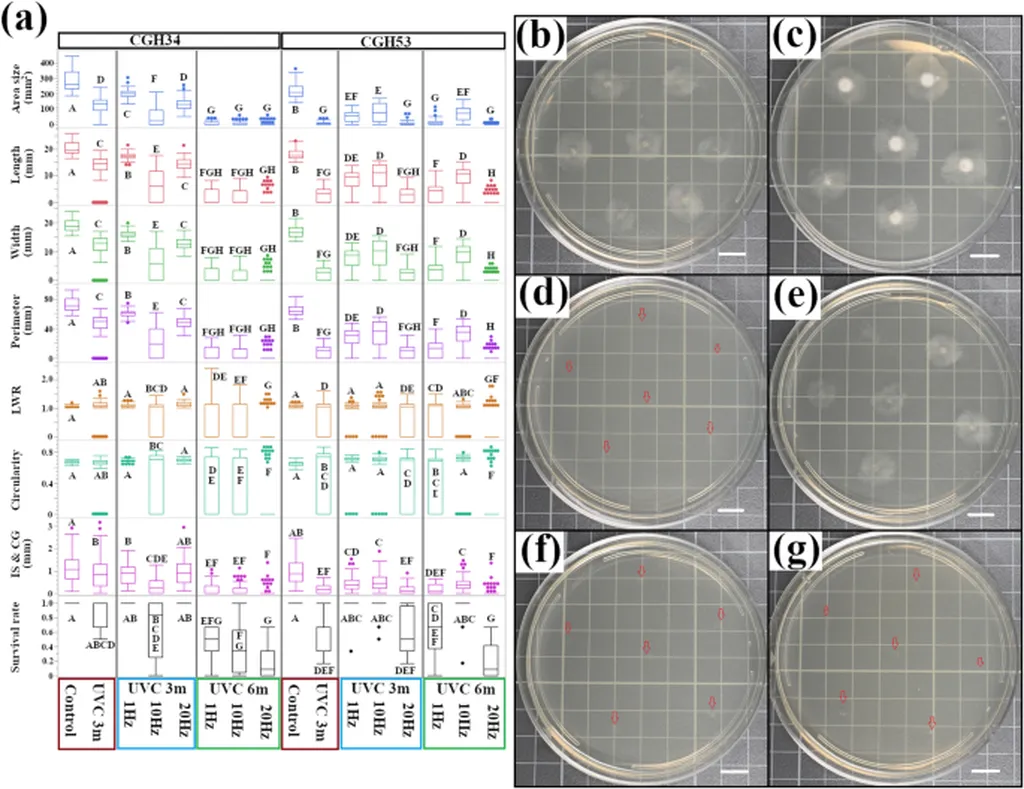In the quest for sustainable agriculture, researchers are turning to innovative solutions to combat plant pathogens, reducing reliance on chemical treatments. A recent study published in *Scientific Reports* (translated from English as “Scientific Reports”) sheds light on the differential responses of cacao-infecting fungi to ultraviolet (UV) radiation, offering promising insights for the agricultural sector.
Led by Insuck Baek of the Environmental Microbial and Food Safety Laboratory at the United States Department of Agriculture’s Agricultural Research Service, the research focused on two cacao pathogens: *Colletotrichum gloeosporioides* and a more resistant species, *Pestalotiopsis sp.* The study employed a sophisticated framework combining quantitative morphology, hyperspectral imaging (HSI), and machine learning to understand the physiological mechanisms behind UV sensitivity.
The findings revealed that Ultraviolet-C (UVC) radiation at 275 nanometers (nm) was significantly more effective than Ultraviolet-B (UVB) at 305 nm. “A 4-minute exposure to UVC achieved a similar level of inactivation on a sensitive isolate as a 30-minute exposure to UVB,” Baek explained. This stark difference highlights the potential of UVC as a more efficient and targeted treatment method.
However, the study also uncovered a notable disparity in resistance between the two fungi. After 30 minutes of UVC exposure, the resistant *Pestalotiopsis sp.* maintained an 89% survival rate, whereas *C. gloeosporioides* isolates were almost completely inactivated, with less than 8% survival. Hyperspectral imaging revealed that this resistance correlated with physiological stability, while sensitive isolates exhibited significant biochemical disruption.
Machine learning models successfully classified isolates based on their UV-induced phenotypes with over 73% accuracy. This understanding enabled targeted strategies, such as synergistic treatment with sonication, which overcame the high resistance of *Pestalotiopsis sp.*
The implications of this research are far-reaching for the agricultural sector. By providing a mechanistic basis for optimizing physical pathogen controls, the study paves the way for more effective and sustainable pest management strategies. “Our work offers a roadmap for developing tailored UV treatments that can be integrated into existing agricultural practices,” Baek noted.
As the global demand for sustainable and efficient agricultural solutions grows, this research could shape future developments in the field. By leveraging advanced technologies like hyperspectral imaging and machine learning, farmers and agritech companies can adopt more precise and environmentally friendly methods to protect crops. The study not only advances our understanding of pathogen resistance but also opens new avenues for innovation in the agricultural sector.

